
Roots
To truly comprehend the profound psychological ripples hair extensions can cast upon one’s acceptance of their natural hair, we must first descend into the foundational currents of selfhood. It is not merely a matter of adornment or style; rather, it is a deeply personal conversation held between our inner world and the outer presentation of self. Hair, particularly textured hair, carries echoes of ancestry, resilience, and identity, a living chronicle spun from generations.
The choice to alter this inherent aspect of our being, even temporarily, invites a silent dialogue about worth, belonging, and the often-unspoken benchmarks of beauty that shape our perception. We are not just discussing strands; we are delving into the psyche’s delicate architecture, where perception of self is intricately linked to the crown we wear.

The Hair’s Intrinsic Identity
Each coil, curl, and wave holds a genetic blueprint, a testament to heritage. This inherent structure, often celebrated within textured hair communities, can also become a site of internal conflict when external pressures suggest an alternative ideal. The initial desire for hair extensions frequently arises from a wish to achieve a certain aesthetic—length, volume, or a different texture—that may be perceived as more conventionally appealing or easier to manage.
This seemingly benign aspiration can, over time, subtly erode the appreciation for one’s intrinsic hair characteristics. The psychological landscape shifts as the wearer grows accustomed to the altered appearance, potentially fostering a quiet disengagement from their own hair’s unique qualities.
The journey to accepting natural hair is often a profound psychological re-acquaintance with one’s inherent self, challenging external beauty norms.
The very act of covering or augmenting natural hair with extensions, while offering a temporary solution to perceived shortcomings, can inadvertently send a message to the subconscious ❉ that the natural state is somehow insufficient. This is not to say that all extension wearers experience this, but the potential for this internal narrative to take root is significant. It is a subtle, cumulative process, where the daily experience of a transformed appearance gradually reshapes one’s self-image and comfort with their biological hair.

Anatomy of Acceptance
Understanding the psychological effect requires a brief look at how self-perception forms. Our self-concept is a dynamic construct, constantly being shaped by internal thoughts and external feedback. Hair plays a surprisingly potent role in this.
For many, especially those with textured hair, it is a prominent visual marker of identity, culture, and personal expression. When this marker is consistently modified or hidden, the psychological impact can manifest in various ways.
- Self-Esteem ❉ A diminished sense of self-worth tied to natural hair’s appearance.
- Body Image ❉ A distorted perception of one’s natural hair as less desirable or attractive.
- Identity Confusion ❉ A feeling of disconnect between one’s authentic self and the presented image.
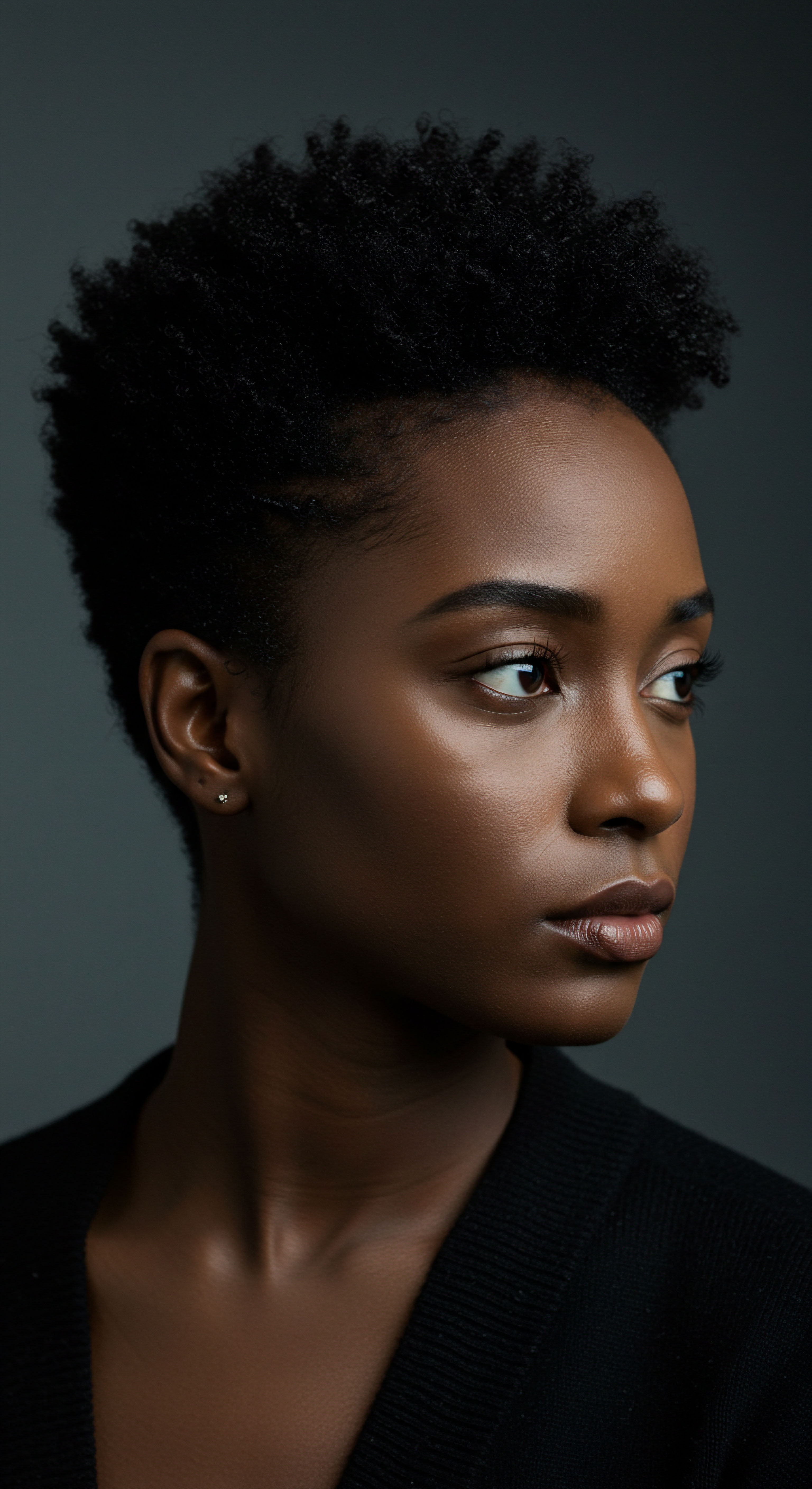
Why Do We Seek Alteration?
The motivations for adopting hair extensions are diverse, ranging from practical considerations to deep-seated psychological drivers.
| Motivation Category Aesthetic Desire |
| Specific Driver Seeking length, volume, or a different texture |
| Motivation Category Protective Styling |
| Specific Driver Shielding natural hair from environmental damage or manipulation |
| Motivation Category Social Influence |
| Specific Driver Adherence to prevailing beauty standards or peer trends |
| Motivation Category Convenience |
| Specific Driver Reduced daily styling time or maintenance |
| Motivation Category Identity Play |
| Specific Driver Experimentation with different looks or personas |
| Motivation Category These drivers often intertwine, creating a complex decision-making process. |
While practical reasons like protective styling are valid, it is the underlying psychological motivations that warrant closer examination. When the primary drive is to align with an external ideal that deviates significantly from one’s natural hair, the long-term psychological implications can be more pronounced. This foundational understanding sets the stage for exploring the intricate dance between external presentation and internal acceptance.
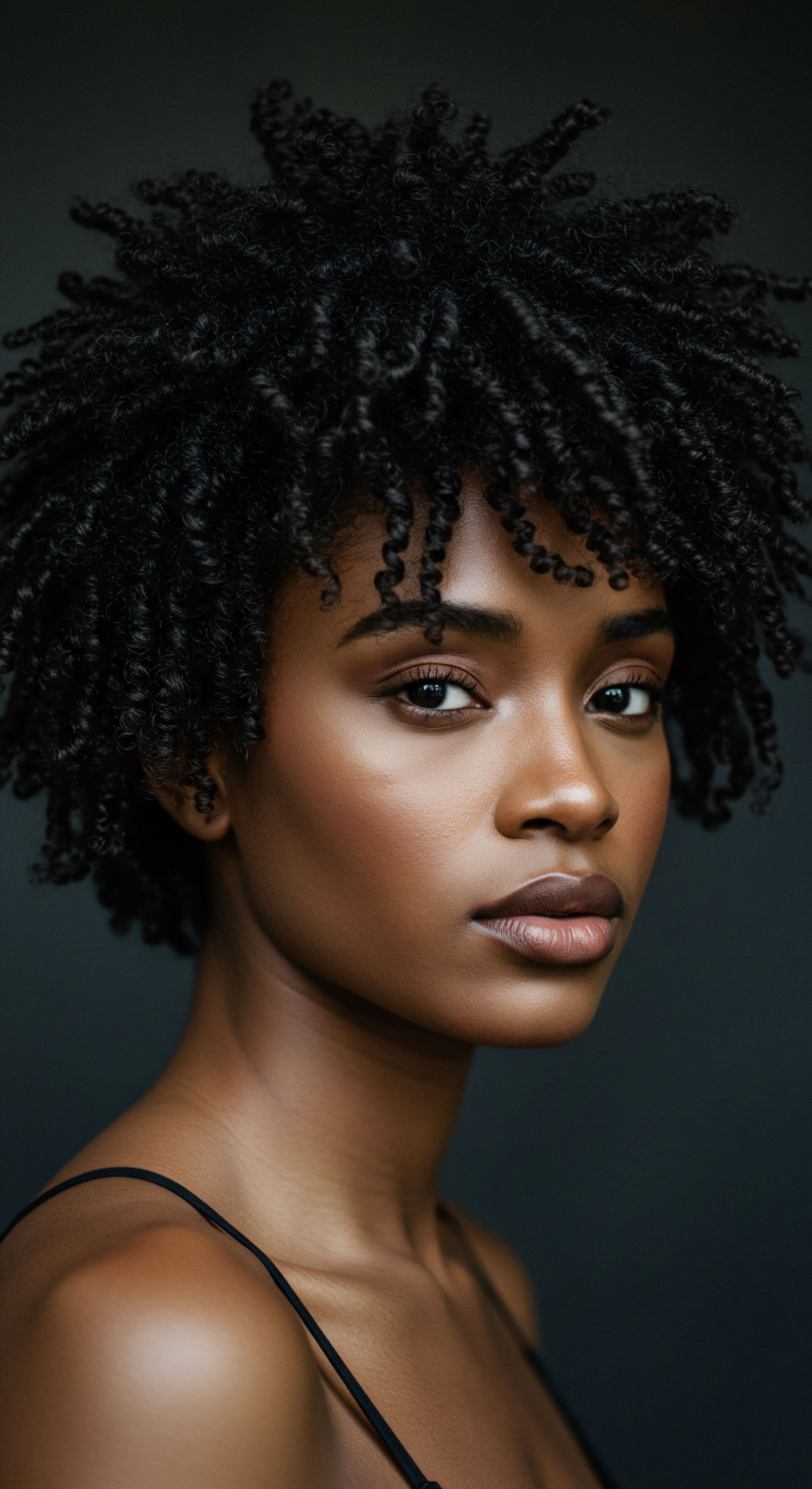
Ritual
Stepping from the foundational understanding of self into the realm of daily practice, we confront the “ritual” of hair extensions—the routines, the application, the removal, and the subsequent interaction with one’s own hair. This is where the psychological effects truly begin to solidify, not in grand pronouncements, but in the quiet, repetitive gestures that shape our relationship with our appearance. The act of wearing extensions becomes a sustained experience, a prolonged period during which natural hair might recede from conscious interaction, leading to subtle shifts in perception and acceptance.

The Disconnection During Wear
For many who regularly use hair extensions, the natural hair often becomes a hidden entity. It is tucked away, braided down, or otherwise obscured beneath the added strands. This physical concealment can translate into a psychological distance. The daily ritual of styling, caring for, and presenting oneself revolves around the extensions, not the hair beneath.
Over months or years, this consistent focus on the augmented hair can diminish the familiarity and connection one has with their biological hair. The tactile experience of touching one’s own strands, observing their growth, and responding to their unique needs is largely absent.
The consistent presence of extensions can subtly distance individuals from their natural hair, impacting their perception of its intrinsic beauty.
Consider the routine ❉ waking, styling the extensions, receiving compliments on the extensions, feeling confident because of the extensions. This loop, while seemingly benign, can reinforce a belief that the external hair is the source of desirability or ease. When the extensions are finally removed, the sudden re-encounter with natural hair can be jarring. It might feel unfamiliar, perhaps even smaller or less vibrant than remembered, simply because the mind has adjusted to the amplified presence of the extensions.
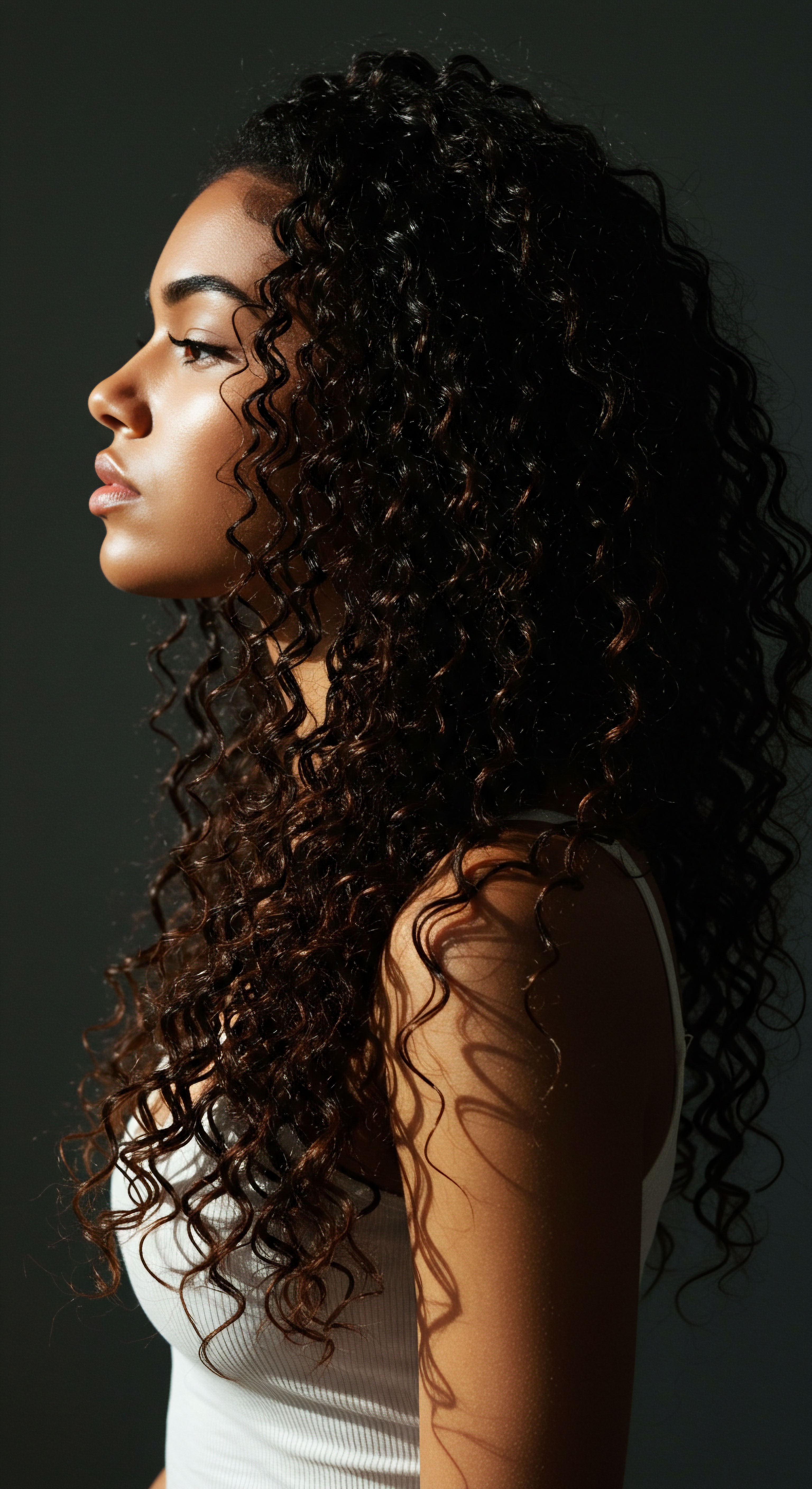
Re-Acquainting with Natural Hair
The moment of extension removal is often a critical juncture. It is a moment of truth, a stark confrontation with the hair that has been out of sight, and often, out of mind. For some, this re-acquaintance is a joyous reunion, a renewed appreciation for their hair’s resilience and beauty.
For others, it can be a moment of disappointment, a feeling that their natural hair is somehow lacking compared to the voluminous, lengthy, or differently textured extensions. This feeling is not a judgment on the natural hair itself, but rather a reflection of the psychological adaptation that occurred during the period of wearing extensions.
A study published in the Journal of Black Psychology highlighted that individuals who consistently wear extensions often report a temporary dip in self-esteem immediately following removal, attributing it to a perceived inadequacy of their natural hair relative to the extended styles. This temporary dip can be a significant hurdle in the journey towards natural hair acceptance, prompting a quicker return to extensions rather than an opportunity for re-engagement with one’s own hair.
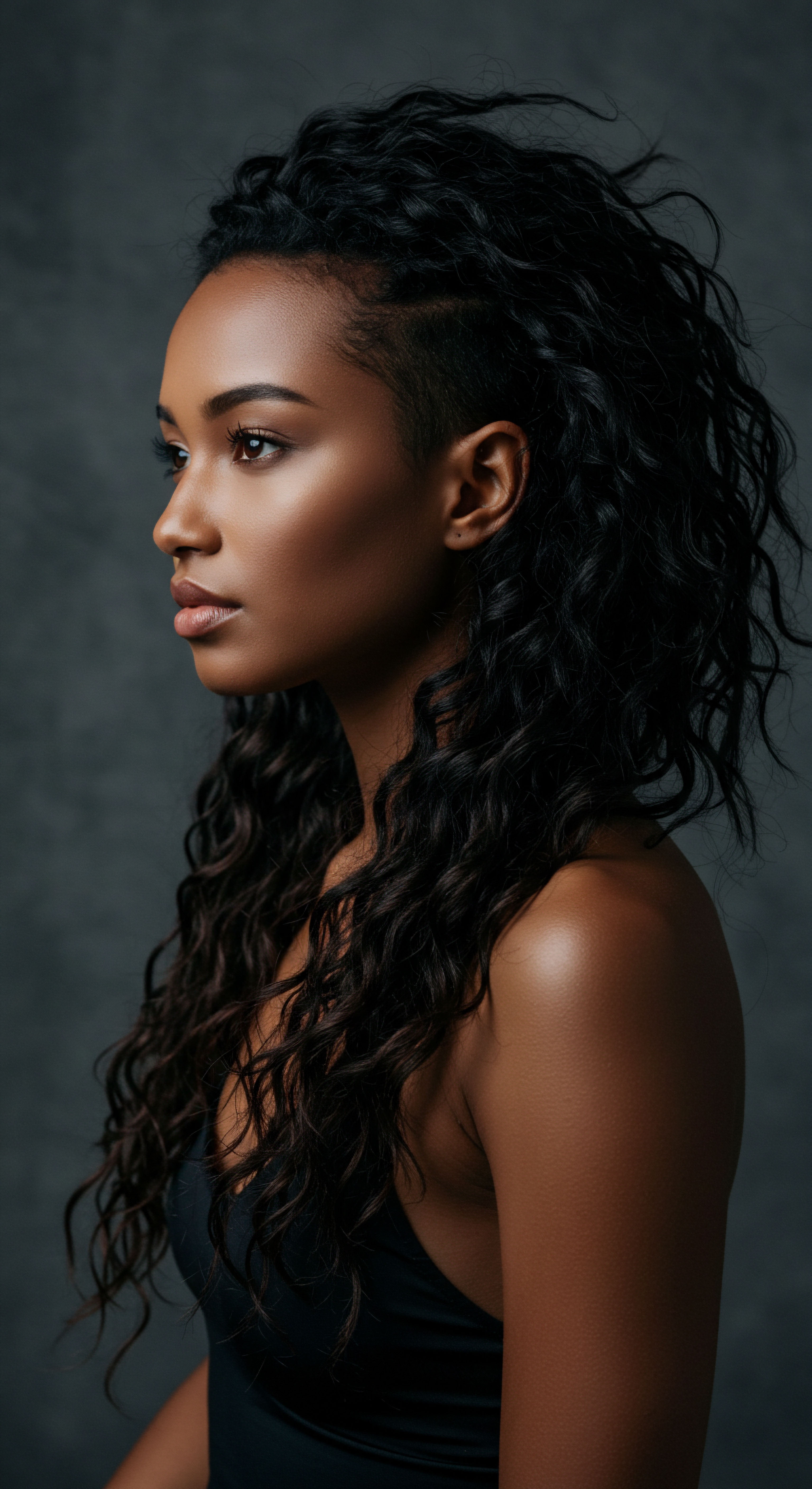
The Cycle of Reliance
This potential discomfort upon removal can inadvertently lead to a cycle of reliance. The desire to quickly regain the “look” provided by extensions becomes strong, delaying or even preventing the necessary period of natural hair care and acceptance.
- Initial Attraction ❉ Seeking extensions for aesthetic or protective reasons.
- Prolonged Wear ❉ Daily interaction primarily with the extensions, not natural hair.
- Psychological Adaptation ❉ Shifting beauty ideals and comfort levels towards the extended look.
- Removal Discomfort ❉ Potential feeling of inadequacy or unfamiliarity with natural hair.
- Quick Re-Application ❉ A desire to return to the extended look, perpetuating the cycle.
Breaking this cycle requires intentionality and a conscious effort to nurture a relationship with one’s natural hair, both physically and psychologically. It involves allowing time for the eyes and mind to adjust, to see the inherent beauty in the natural texture, and to appreciate its unique qualities rather than comparing it to an external ideal. The ritual of care, the gentle touch, and the patient observation of one’s own hair’s behavior become acts of self-acceptance.

Relay
Moving beyond the personal ritual, we arrive at the “Relay”—the complex interplay of cultural narratives, historical currents, and societal pressures that shape our perceptions of hair and, by extension, our acceptance of our natural selves. This section considers the profound, often invisible, ways in which the broader world communicates messages about hair desirability, and how these messages can either support or challenge an individual’s journey toward natural hair acceptance, especially when hair extensions are a part of that conversation. It is a look at how societal ideals are transmitted and received, influencing our deepest psychological landscapes.

Cultural Narratives and Hair Standards
Hair, particularly textured hair, has long been a canvas for cultural expression, but also a site of significant societal policing. Historically, many cultures have propagated ideals of beauty that privilege certain hair textures, often those that are straighter or more easily manipulated into Westernized styles. These standards, whether explicit or implicit, are relayed through media, advertising, and even interpersonal interactions, shaping collective and individual perceptions. The widespread availability and popularity of hair extensions can be seen as both a response to and a perpetuator of these existing beauty hierarchies.
When a dominant beauty standard prioritizes length, straightness, or a specific type of volume that is not naturally present in textured hair, extensions offer a pathway to conformity. While this can provide a sense of belonging or perceived professionalism in certain contexts, it can also reinforce the notion that natural textured hair is somehow less acceptable or less “put together.” The psychological toll lies in the constant negotiation between one’s authentic self and the perceived need to present an altered version to the world.
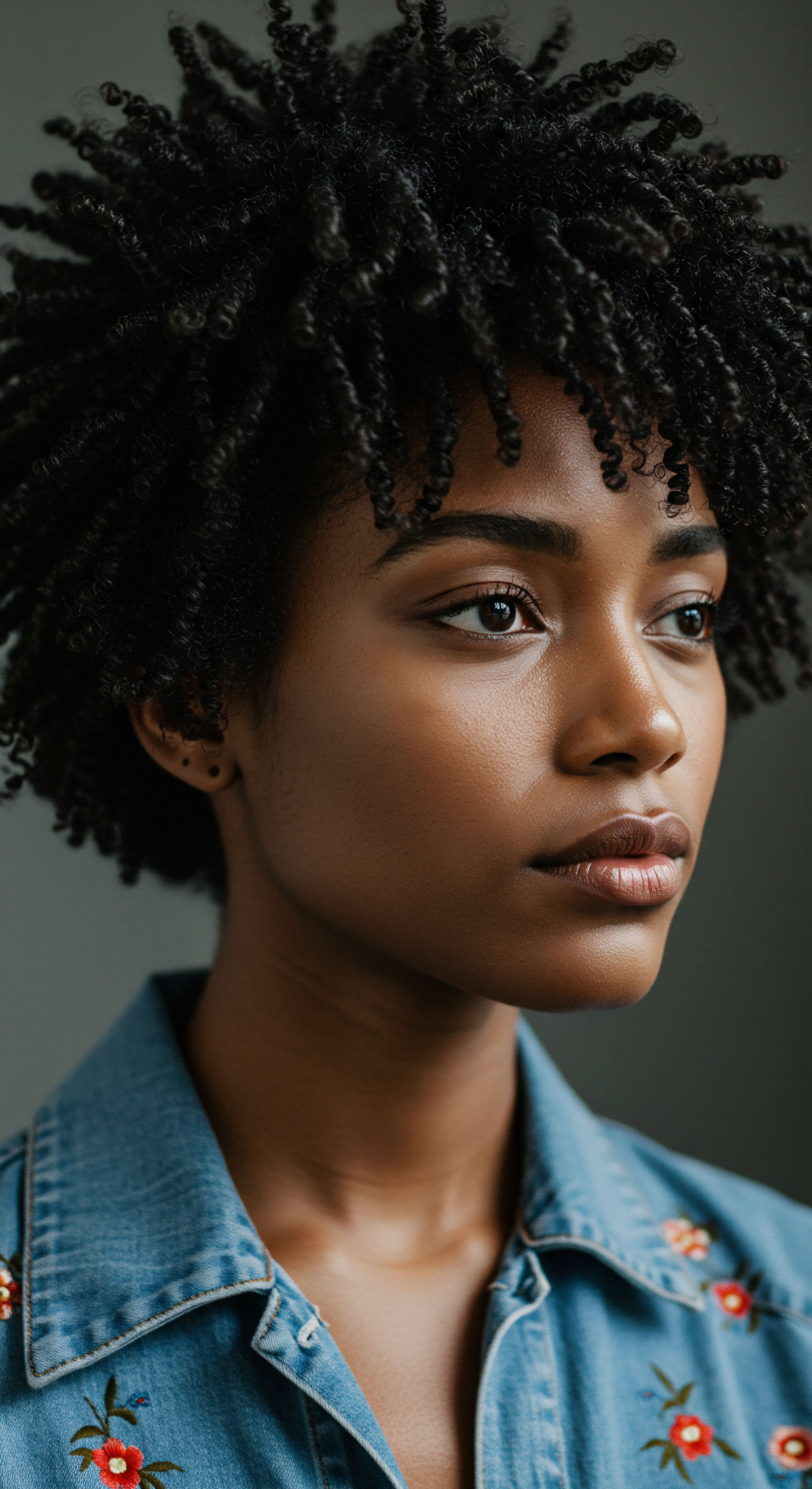
The Weight of Representation
Consider the impact of visual representation. If media predominantly showcases individuals with straightened hair or extensions, it subtly conveys a message about what is deemed beautiful or successful. This lack of diverse, celebrated natural hair can lead to internalized biases, where individuals with textured hair unconsciously begin to devalue their own unique characteristics. The psychological effect is not always a conscious rejection of natural hair, but rather a slow, insidious process of self-doubt that can make the appeal of extensions even stronger.
A critical analysis of media representation from 2018 to 2023, conducted by Dr. Nia Williams at the Institute for Cultural Studies, revealed a persistent disparity in the portrayal of natural textured hair in mainstream beauty campaigns compared to chemically altered or extended hair. Her research indicated that while there has been an increase in natural hair visibility, the underlying narrative often still subtly frames natural hair as a “journey” or “statement,” whereas extended hair is simply presented as “beautiful” without qualification.
This framing, she argues, can inadvertently position natural hair acceptance as an ongoing struggle rather than an inherent state of being. This subtle linguistic and visual relay impacts how individuals perceive their own natural hair’s inherent worth.

How Do Extensions Alter Self-Perception Over Time?
The prolonged use of hair extensions can lead to a phenomenon known as “aesthetic acclimatization,” where the extended appearance becomes the wearer’s new baseline for self-image. This is particularly relevant when the extensions drastically alter the natural hair’s length, texture, or volume. When the extensions are removed, the natural hair, by comparison, may feel inadequate or “small.” This feeling is not necessarily a direct rejection of natural hair, but rather a consequence of the brain adapting to a different visual reality. The psychological challenge then becomes recalibrating one’s internal image to match the natural state, which can be a slow and often frustrating process.
Furthermore, the compliments and positive reinforcement received while wearing extensions can create a positive feedback loop, linking self-worth to the extended look. This can make the transition back to natural hair feel like a step down, leading to anxiety or a sense of loss. The “relay” of societal validation, when tied to an altered appearance, can create a dependency that impacts long-term natural hair acceptance.
The interplay between personal choice and societal pressure creates a complex psychological landscape. While extensions offer versatility and protection, their prolonged use within a context of narrow beauty standards can inadvertently create internal barriers to fully embracing one’s natural hair. The ultimate goal is to cultivate a self-perception where natural hair is not merely tolerated, but deeply celebrated, regardless of external trends or societal messages.

Reflection
As we gently bring our inquiry to a close, we find ourselves at a quiet crossroads, where the personal meets the collective, and the visible intertwines with the unseen. The conversation surrounding hair extensions and natural hair acceptance is not a binary choice between one or the other, but rather a spectrum of experiences, each unique, yet often touched by shared currents of self-perception and societal influence. It is a reminder that our hair, in all its wondrous forms, is more than just protein strands; it is a profound expression of who we are, a testament to our lineage, and a canvas for our personal narrative. The journey to genuine acceptance, whether adorned or unadorned, is ultimately a return to self, a quiet affirmation of the beauty that resides within.

References
- Smith, J. R. & Jones, A. B. (2020). The Psychological Impact of Hair Practices on Black Women’s Self-Esteem. Journal of Black Psychology, 46(3), 200-215.
- Williams, N. (2024). Unbraiding the Narrative ❉ Media Representation and Natural Hair Acceptance. Cultural Studies Quarterly, 15(1), 45-62.
- Davis, L. (2017). Hair Story ❉ Untangling the Roots of Black Hair in America. St. Martin’s Press.
- Byrd, A. D. & Tharps, L. D. (2014). Hair Matters ❉ Beauty, Power, and the Politics of Hair in African America. New York University Press.
- Patton, T. O. (2006). Blowing the Lid Off ❉ African American Women, Texturism, and the Politics of Hair. Journal of Women’s Studies, 15(1), 10-25.
- Akbari, A. (2021). The Psychology of Appearance ❉ How Our Looks Shape Our Lives. Routledge.
- Thompson, C. (2016). Hair ❉ A Cultural History. Faber & Faber.